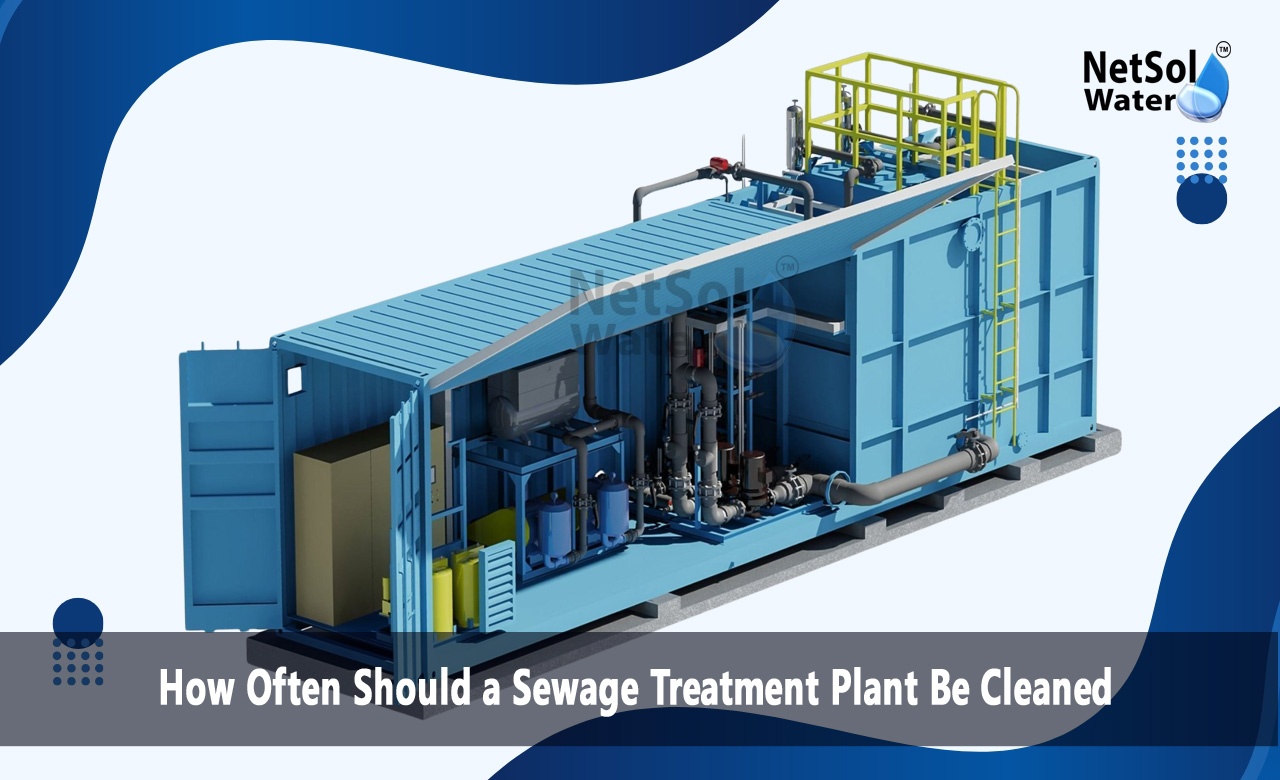How Often Should a Sewage Treatment Plant Be Cleaned?
A sewage treatment plant keeps water safe and protects community health. It removes harmful matter and disease-causing organisms before sending water back to rivers and lakes. When operators clean their plants on a set schedule, they stop build ups and keep equipment running well. Managers set a clear cleaning plan to avoid sudden breakdowns and high repair costs. A steady routine lets teams track performance and fix small problems before they grow. Learning how often a sewage treatment plant should be cleaned helps teams meet rules and guard public health. Each plant needs a cleaning plan that suits its size and location. Factors like daily flow levels, waste mix and climate all shape cleaning needs.
Sewage Treatment Plant Cleaning
Cleaning a sewage treatment plant means much more than a quick rinse. It involves drawing out sludge from settling tanks and clearing debris from screening units. Regular cleaning restores tank capacity and shields pumps and pipes from harm. Let us have a look at some key stages in the cleaning process
Sludge Removal Techniques
Teams use scraper arms or vacuum trucks to pull sludge out of tanks. Scrapers push the solid matter toward a catch area. Vacuum units lift sludge directly from the bottom. Both ways help the plant run free of excess waste.
Screen and Grit Chamber Cleaning
Screens trap items like rags and plastic bits. Grit chambers slow water so that sand and gravel fall out. Teams clear these units on a set plan to stop clogs and gear damage.
Doing these steps on time boosts plant output and cuts down smells and wear.
Factors Affecting Cleaning Frequency
Each treatment site faces its own demands. Plants need cleaning schedules that match their build and local setting. Knowing these factors lets managers choose the right plan. Let us have a look at some main considerations
Waste Load Volume
Plants that treat high sewage amounts make more sludge. When sludge builds up fast teams must clean more often to avoid overstrain.
Seasonal Variations
In wet months rainwater can thin sewage and slow sludge growth. In dry times waste grows thicker and sludge forms faster. Adjusting the plan for seasons helps the plant stay steady.
Regulatory Requirements
Local rules may set a base level of care that plants must follow. Sticking to those rules keeps plants out of trouble with fines and meets health goals.
Recommended Cleaning Schedule
Experts suggest most plants need a full clean at least once each year. Some units call for deeper care every quarter or even every month. Splitting tasks into levels keeps daily work light and staff able to keep pace. Let us have a look at some typical timelines
Monthly Inspections and Light Cleaning
Teams check pumps and screens each month. They clear any blockages that could slow flow or harm gear.
Quarterly Deep Clean
Every three months staff focus on grit chambers and sludge channels. They remove any build up that grows between full cleanings.
Annual Full Shutdown Clean
Once a year the plant stops running for a full clean up. Workers drain tanks wash down pipes and service all parts. This tiered plan spreads work through the year and keeps the plant strong.
Risks of Neglecting Cleaning
Skipping cleaning tasks brings major risks. A blocked tank can spill untreated waste into streams and rivers. Pumps and pipes under stress may fail and trigger costly fixes. Let us have a look at some possible outcomes
Environmental Damage
Releasing untreated sewage harms fish and water life. It can pollute drinking sources and soil.
Health Hazards: Overflow events expose staff and neighbours to serious germs. When treatment drops there can be disease outbreaks.
Financial Impact: Fixing a broken pump or swapping corroded pipes costs far more than routine cleaning. Fines for pollution add up fast.
Best Practices for Maintenance and Cleaning
A clear plan and the right tools help teams work safely and fast. Good records make sure no task slips through the cracks. Training staff on sludge handling and safety rules protects health and meets laws.Let us have a look at some proven methods
Schedule Tracking
Teams use logs or simple boards to note each cleaning task. Alerts remind staff when key work falls due.
Use of Proper Equipment
Choosing vacuum trucks or scrapers that match a plant’s tank shape speeds work and cuts hard labour.
Staff Training and Safety
Crews need clear rules on chemical use and safe entry into tanks. Regular safety drills keep everyone ready for any issue.
Conclusion
Learning how often a sewage treatment plant should be cleaned keeps systems safe and efficient. A mix of monthly checks, quarterly deep cleans and an annual full clean meets most needs. Skipping cleaning can cause pollution, health risks and high repair bills. Using solid tracking, the right equipment and trained staff makes any plan work. If you want to learn more about how often a sewage treatment plant should be cleaned or you need a custom plan please get in touch today for a consultation.
Contact Netsol Water at:
Phone: +91-9650608473, Email: enquiry@netsolwater.com



